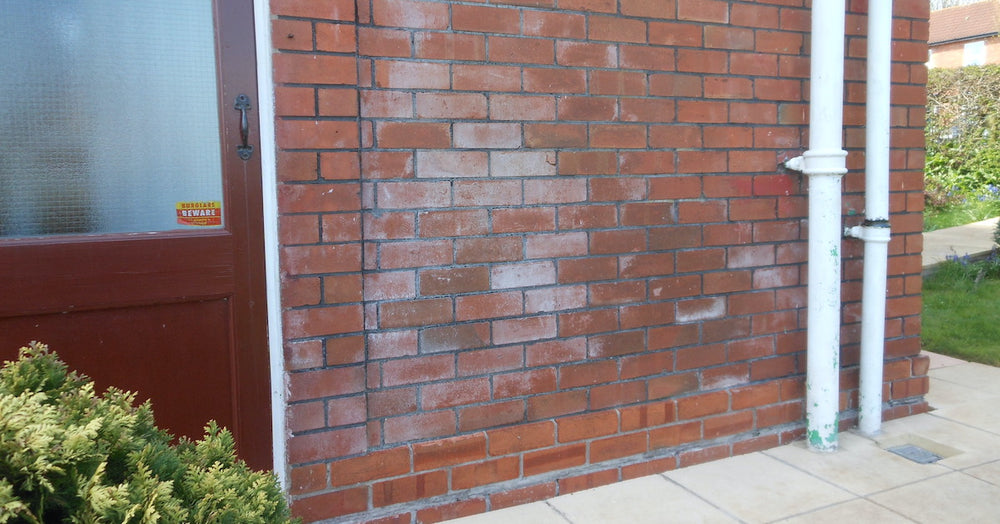
Efflorescence is a crystalline deposit of salts that forms on brick, concrete and wall render due to the ingress of water into a porous building material. It has a white or greyish appearance that remains on the surface after the water has evaporated.
The photo above shows a classic example of efflorescence appearing on brickwork. We treated this brick wall with hydrochloric acid, which as yet we do not sell but you can find suppliers on Amazon and other sources.
We've found that an 8% dilution sprayed, and brushed into the worst areas, works well and is the safest approach. Give multiple treatments if necessary, rinsing between each treatment.
We've experimented with a 16% dilution and found that this higher dilution works very quickly and effectively. But remember that the hazard factor is also significantly increased and that hydrochloric acid is a dangerous chemical.
Whatever the dilution used, we strongly recommend wearing full PPE throughout the treatment and rinsing process.

Here you can see the same wall after treating with hydrochloric acid diluted 16%.
Bear in mind that the brickwork is 93 years old, so will never look quite as good as new.
Quick tip: Where the efflorescence is particularly heavy it can sometimes be helpful to manually, and very gently and carefully, scrape or brush off the worst before treating. But ideally, chemical treatment alone is our first choice to avoid damage to the surface of the building material from scraping.
Safety: Take great care to ensure customers, the general public, animals and children are kept well clear of the working area by barriers. And position co-workers around the working area whose job is just to keep the area safe by stopping anyone other than contractors from entering.
Also protect plant life (including lawns) that could be exposed to spray drift or run off by pre and post-drenching with tap water and covering any particularly delicate plants.
And beware of splashes on coloured concrete, as run-off can leach the colouring out and leave a whitened area. We've found that it's best to pre and post drench areas of coloured concrete and also to cover them prior to treating the efflorescence.
How to treat efflorescence on wall render
It is important to first check if there's a problem with the structure of the wall and render. If so the problem should be remedied before treating the efflorescence. Otherwise, with the original cause still remaining, the efflorescence will inevitably return.
Like us, Krend recommend treating efflorescence with an 8-16% diluted hydrochloric acid solution. And in our experience, after long-term observation of the results, this is the best and most effective approach.
Quick tip: Mathematically 8% is 8/100, ie 8:100. In other words dilute 8 parts acid with 100 parts water. So if for every 100 ml of water, add 8 ml of acid. And therefore for every 1L, or 1000ml, add 80ml of acid. And so on ...
We hope this information is helpful and sincerely wish you great success in your soft washing business,
Ben, Leo, Fiona, Stevie & Anthony



Leave a comment